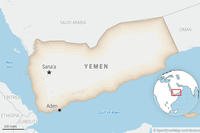Next year about 1,000 fewer troops will be getting an allowance intended to help them live in expensive parts of America, the Defense Department announced Friday.
In a statement, the Pentagon announced that $8 million will be paid to around 5,000 service members in cost-of-living allowances in 2023. For 2022, those figures were $8.5 million for 6,000 service members stationed in the continental U.S.
Cost of Living Allowances, known as COLA, come in two forms -- one for stateside troops and another for those stationed overseas. Service members have to pay taxes on the continental U.S. variant, while the overseas version is tax free.
Read Next: Retirees to Get a Second Chance to Enroll In or Opt Out of the Survivor Benefit Plan
The allowance is calculated based on the costs of goods and services "to help offset higher prices in the highest-cost locations," the Pentagon press release explained, while also accounting for fluctuations to the Basic Allowance for Subsistence.
On Friday, President Joe Biden signed Congress' annual defense policy bill that included an 11% increase to the Basic Allowance for Subsistence. The changes mean enlisted personnel will see a nearly $50 jump per month while officers will get around $30 more in their paychecks come mid-January.
That bill also contained support for the largest pay raise in decades -- 4.6% -- adding up to about $1,300 more per year for many junior service members and $2,500 for senior enlisted and junior officers.
Facing historically high inflation rates, the Pentagon has been rolling out a series of efforts to help service members and their families, especially in expensive areas in the country that have in particular seen skyrocketing housing costs, though the agency has been careful not to say that the moves are tied to the economy.
In September, the Pentagon announced it would be increasing housing allowances for troops living in 28 expensive areas. The agency started paying out those higher rates in October, and they will be maintained for 2023.
At the same time, the DoD also increased its support for commissaries, a move expected to drop prices by 3%-5% on the shelves of the stores serving the military community.
The issue of service members needing help to get by isn't new, but the increase in prices nationally has made the problem much worse.
One report found that one in five military families reported food insecurity in 2021, a massive spike from 2019 where the same researchers found it was one in eight.
And when families do struggle, they have been hesitant to ask for help, worried about how their commands would react or that the services wouldn't do anything.
When those September changes were announced, Pentagon spokesman Brig. Gen. Patrick Ryder told the press that Defense Secretary Lloyd Austin "wants our military men and women to be able to come home, to put food on the table, to have the money in their pocket that they need to be able to live a healthy life, a comfortable life while they serve our nation."
"This is really personal for Secretary Austin," Ryder added.
-- Konstantin Toropin can be reached at konstantin.toropin@military.com. Follow him on Twitter @ktoropin.
Related: COLA Reinstated for Service Members in Japan for the First Time in Months
















